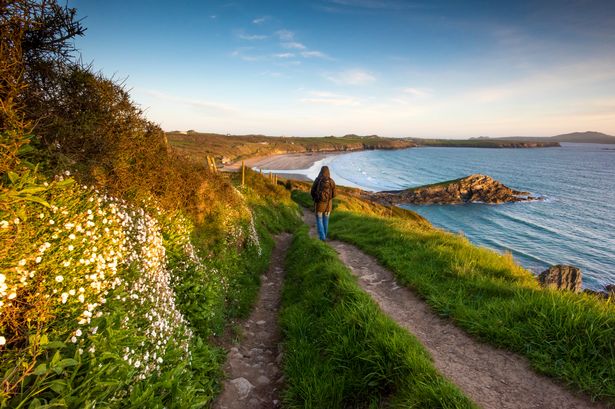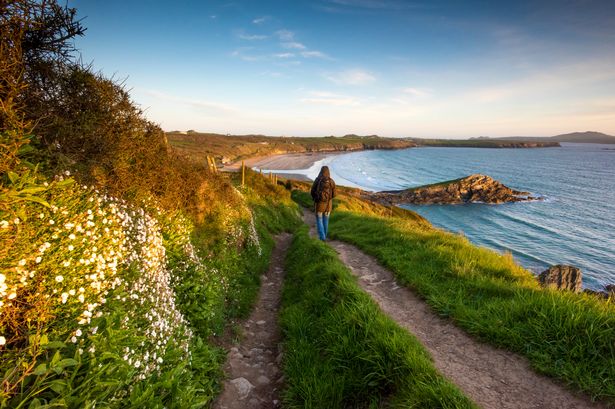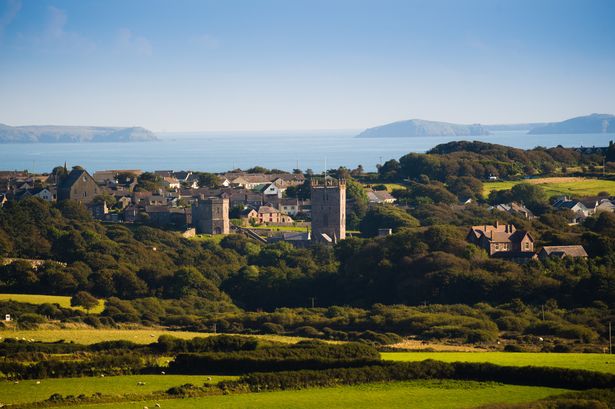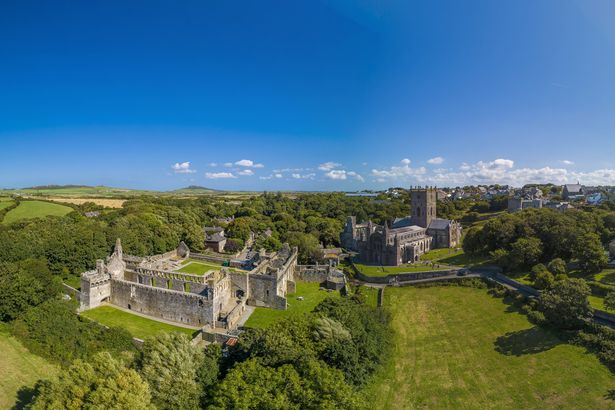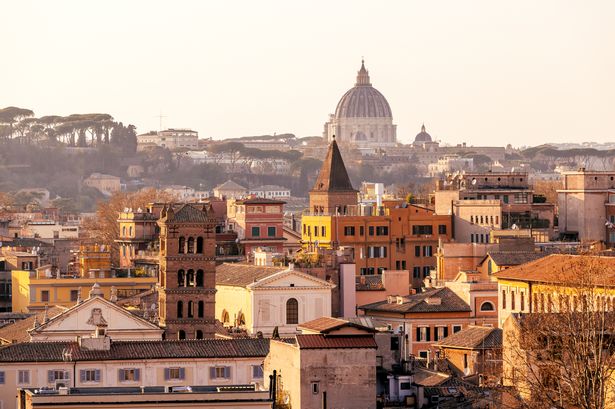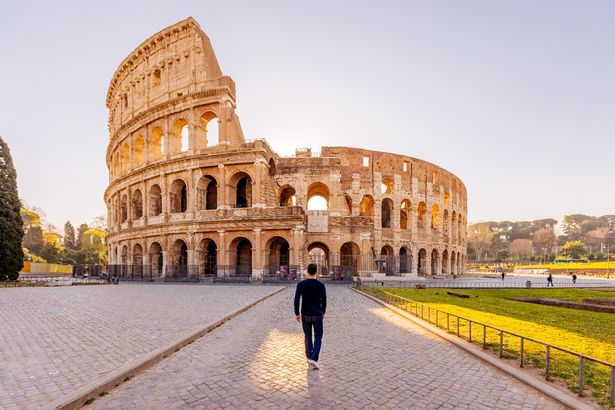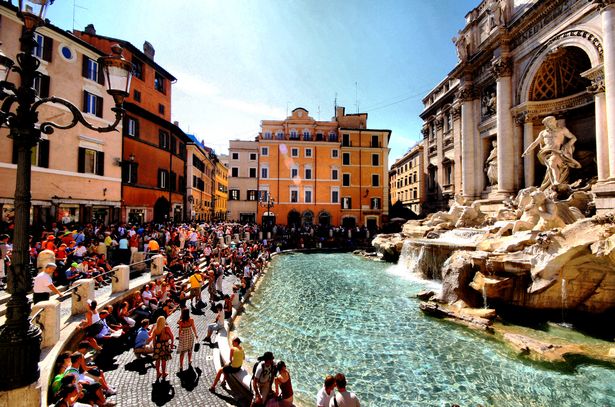That title of UK’s smallest city goes to St Davids, which is tucked away in the picturesque landscape of Pembrokeshire, Wales. It is officially the smallest city in the United Kingdom, covering just 0.23 square miles
A city that’s smaller than most villages packs well above its weight class when it comes to visitor numbers.
There are a few places in the UK that have won their place in the hearts of pub quiz question setters due to their smallness. The country’s smallest county? Rutland. The country’s smallest town? Fordwich. The country’s smallest city?
That honour goes to St Davids, which is tucked away in the picturesque landscape of Pembrokeshire, Wales. It is officially the smallest city in the United Kingdom, covering just 0.23 square miles (0.6 km²) and with a population of just over 1,600 people. It comes after images show the cheapest seaside spot in England is full of abandoned £40k homes ‘nobody wants’.
READ MORE: Brits warned of easy mistake that instantly makes Spanish locals think you’re rudeREAD MORE: Lesser-known national park has turquoise waters, dramatic cliffs and no crowds
It feels more like a charming village than a bustling city. Yet, because of its historic cathedral, St Davids has held city status since the 12th century. Mickledore, a travel company specializing in self-guided walking tours, notes that “St Davids is one of those places that surprises first-time visitors. Many expect a city to mean rows of shops and busy streets, yet here, the atmosphere is peaceful, the pace is slow, and the main tourist area can be fully explored in around half a day. It’s the kind of place where you can explore every corner without feeling rushed.”
The definition of a “city” in the UK is not always based on population size. Instead, it often depends on historical or ceremonial importance. St Davids was granted its city status because of its cathedral, which has been a major site of pilgrimage for centuries.
Pilgrims travelled here from across Europe during the Middle Ages to pay homage to St David, the patron saint of Wales. The site became so important that two pilgrimages to St Davids were once said to equal one to Rome, and three equalled a pilgrimage to Jerusalem. Not a bad trade off if you don’t fancy leaving the country or making the 3,000 mile walk to the Middle Easte holy city.
Although St Davids briefly lost its official recognition as a city in 1886, Queen Elizabeth II formally restored its city status in 1995, ensuring its place on the map as the UK’s smallest city.
One of the delights of St Davids is its walkability. The core area — including the cathedral, Bishop’s Palace, shops, and cafés — can be explored at a relaxed pace in roughly half a day. The compact scale makes it an ideal destination for travellers who want a leisurely visit without the stress of navigating a sprawling urban space.
Instead of traffic and high-rises, visitors find narrow streets, independent shops, small galleries, and cafés where local produce takes centre stage. The city’s scale allows tourists to take their time, wander slowly, and really absorb the atmosphere.
For those who want more, the Pembrokeshire Coast Path, part of the 186-mile-long trail that skirts the county, is just minutes away. Walkers are rewarded with dramatic sea cliffs, golden beaches, and opportunities for wildlife spotting, from grey seals basking on the rocks to rare seabirds nesting in the cliffs. Note: While the main city area can be explored in half a day, venturing along the coastal paths can take several hours or a full day, depending on the chosen route.
At the heart of St Davids is its cathedral, founded in the 12th century and still a place of worship today. Built in a hollow to protect it from Viking raiders, it remains far larger and more imposing than most visitors expect for such a tiny city. The cathedral houses centuries-old treasures, carved oak stalls, and an organ that fills the space with music during regular concerts.
Nearby, the Bishop’s Palace — now a dramatic ruin — tells the story of the city’s medieval importance. Its crumbling arches and towers give a glimpse into the grandeur of St Davids when it was at the centre of Welsh religious life.
Unlike larger cities where historic buildings are often hidden between modern developments, St Davids preserves a sense of history in almost every street. Stone cottages, medieval ruins, and chapels stand alongside art galleries and modern craft shops, creating a seamless blend of past and present.
Though remote, St Davids is accessible via Haverfordwest (about 16 miles away), which has rail links to Swansea, Cardiff, and beyond. Buses connect Haverfordwest with St Davids, making it reachable even for those without a car. Tourism is a vital part of the local economy, with thousands of visitors each year drawn by the city’s cathedral, coast, and charm.
For travellers seeking something unique, St Davids offers the novelty of being in a city that doesn’t feel like one. There are no skyscrapers, no traffic jams, and no endless suburbs — just a cathedral, a few streets, and a stunning coastal backdrop.
This makes it especially popular with those looking for a short but memorable trip. Families, walkers, and history enthusiasts all find something to enjoy, whether it’s wandering the cathedral grounds, sampling Welsh cakes in a café, or setting off on a clifftop walk.
